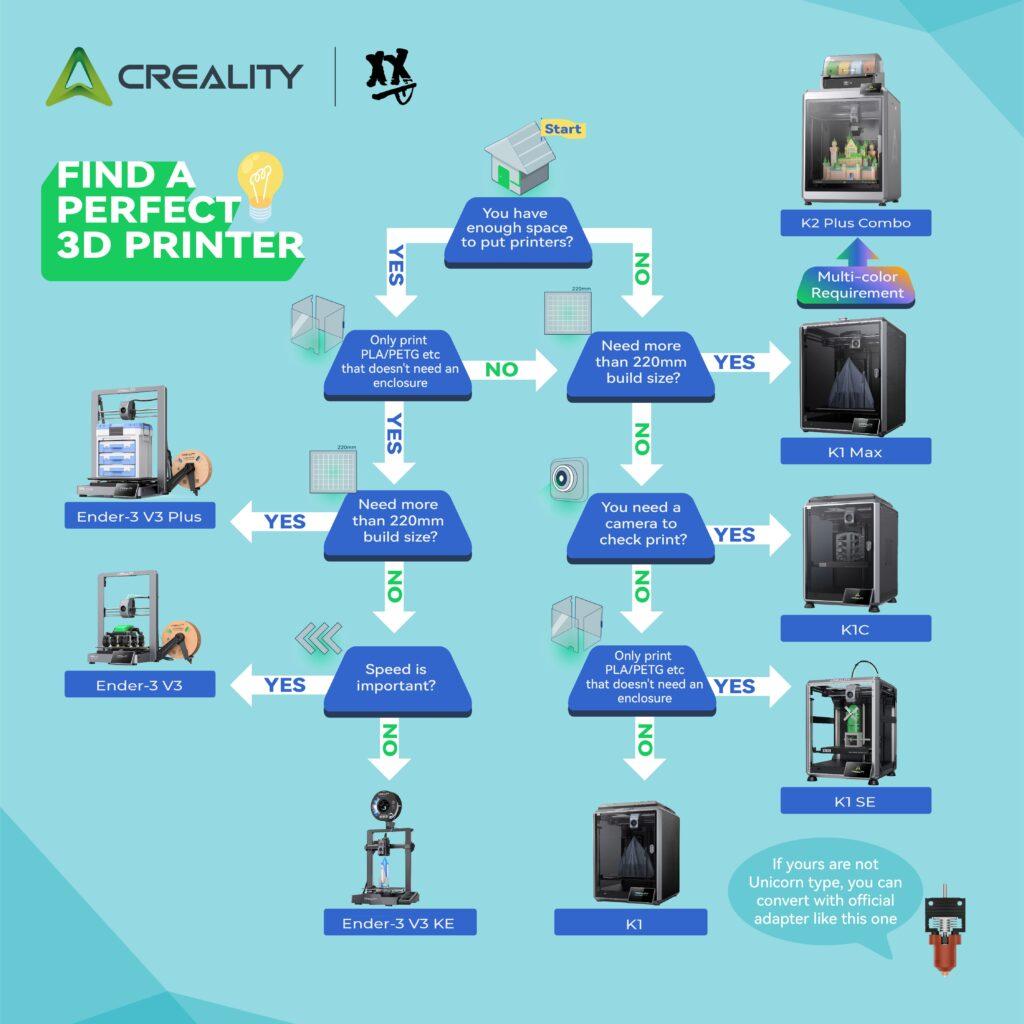
The hum of a desktop 3D printer in a home office or workshop might seem worlds away from the massive machines extruding concrete for buildings or crafting intricate, life-sized sculptures. Yet, these two ends of the additive manufacturing spectrum are more closely related than you might think. 3D printing, in its various forms, is fundamentally reshaping how we create, innovate, and solve problems. It’s a technology that has simultaneously become incredibly accessible, empowering individual makers and hobbyists while also pushing the boundaries of what’s possible in large-scale industrial, artistic, and societal projects. From personalized trinkets to pioneering sustainable solutions, the underlying principle remains the same: building objects layer by layer from digital designs. This shared foundation creates a powerful synergy, where the lessons learned and techniques developed at one scale often inform and inspire innovation at the other. Let’s explore how the spirit driving groundbreaking, large-format 3D printing projects echoes in the capabilities and potential of the humble desktop printer.
Pushing Boundaries: Four Visions Realized Through Large-Scale 3D Printing
The true power of 3D printing shines when it tackles challenges previously deemed too complex, costly, or time-consuming. Consider these notable examples:
- Revolutionizing Construction: Imagine printing entire houses or structures in a matter of days, not months. Large-scale construction printers using specialized concrete mixes are doing just that. These projects aim to provide affordable, resilient housing solutions, particularly in disaster-stricken areas or for underserved communities. They also unlock new architectural possibilities, enabling complex curves and forms that are difficult or expensive to achieve with traditional methods. The societal impact is profound: faster, potentially cheaper, and more sustainable building practices.
- Shoetopia – Striding Towards Sustainability: Envision projects like “Shoetopia,” where 3D printing is leveraged to create customized footwear from recycled or biodegradable materials. Large-format printers can produce intricate designs and textures, allowing for bespoke fits and aesthetics while drastically reducing material waste common in traditional shoe manufacturing. This represents a significant step towards a circular economy in fashion, minimizing the environmental footprint and offering consumers unique, eco-conscious products.
- Monumental Artistry in Full Color: Think beyond small figurines. Advanced 3D printing technologies now allow artists to create large, complex, full-color sculptures with breathtaking detail and nuance. These aren’t just prototypes; they are finished works of art displayed in galleries and public spaces. This technology liberates artists from the constraints of traditional sculpting materials and methods, enabling them to bring intricate digital visions into the physical world on a grand scale and pushing the boundaries of artistic expression.
- Functional Complexity: The Printed Camera: Consider the development of functional cameras where significant portions, including complex mechanisms or the body itself, are 3D printed. These projects demonstrate the ability of additive manufacturing to produce not just forms but also functional, multi-part objects with integrated mechanics. This opens doors for highly customized scientific equipment, specialized photographic tools, or even accessible, open-source hardware designs where users can print and assemble their own devices.
Connecting the Dots: Grand Designs, Desktop Potential
These large-scale achievements might seem distant, but the core principles and creative spirit are directly relevant to desktop 3D printing enthusiasts. The accessibility of home printers allows anyone to engage with the same fundamental technology, albeit on a different scale.
- Echoes of Construction: While you won’t print a house with your desktop machine, the techniques used in large-scale construction printing find parallels. Architects and designers constantly use desktop printers to create detailed scale models of buildings, allowing them to visualize designs, test structural concepts, and iterate quickly before committing to full-scale plans. Hobbyists can experiment with printing modular components, interlocking parts, or even small-scale experimental structures, learning about material properties and design constraints – the same challenges faced by large-format printers, just miniaturized.
- Eco-Friendly Creations at Home: The sustainable ethos behind projects like “Shoetopia” resonates strongly within the desktop printing community. Many hobbyists actively choose eco-friendly filaments like PLA (Polylactic Acid), which is biodegradable and derived from renewable resources like corn starch. Desktop printers become tools for creating sustainable solutions on a personal scale: printing custom planters for herbs, replacement parts to repair broken items instead of discarding them, designing prototypes for eco-conscious products, or even creating tools like compost sifters. It’s about applying the principle of mindful making and material choice, accessible to everyone.
- Affordable Artistry and Detail: The breathtaking detail of large, full-color printed sculptures highlights the precision possible with 3D printing. Desktop printers bring this potential for intricate creation into the home or studio. While multi-color printing might be simpler on consumer machines (often requiring filament swaps or post-processing paint jobs), the ability to produce high-resolution, complex geometries is remarkable. Artists and hobbyists use desktop printers to create detailed miniatures, custom jewelry, intricate decorative pieces, and prototypes for larger artistic visions. It democratizes the ability to turn digital designs into tangible, detailed physical objects, making sophisticated creations affordable.
- DIY Functionality and Innovation: Just as large printers create functional devices like cameras, desktop printers are powerhouses for functional DIY projects. This is perhaps where the connection is most direct and impactful for enthusiasts. Need a specific jig for woodworking? A custom bracket for mounting a sensor? An enclosure for an electronics project? A replacement knob for an appliance? Desktop printers excel at creating bespoke, functional parts that solve real-world problems. This empowers users to become inventors and problem-solvers, creating small but significant innovations – custom tools, assistive devices, camera accessories, drone parts, and countless other gadgets tailored perfectly to their needs.
Empowering the Enthusiast: Innovation on Your Desk
The real magic lies in how desktop 3D printers empower individuals and small businesses. They are not just for toys and trinkets; they are engines of localized innovation.
- Rapid Prototyping: Small businesses can iterate on product designs incredibly quickly, printing prototypes overnight, testing them, refining the design, and printing again – all without the high costs and lead times of traditional manufacturing.
- Custom Solutions: Hobbyists create solutions perfectly tailored to their needs, whether it’s a custom organizer for their workspace, a specialized tool for another hobby, or accessibility aids designed for a specific person.
- Niche Markets: Entrepreneurs can use desktop printers to produce small batches of unique products for niche markets, testing demand before scaling up or catering to specific customer requests that wouldn’t be viable for mass production.
- Education: Schools and libraries use desktop printers as invaluable tools for STEM education, teaching design thinking, engineering principles, and problem-solving in a hands-on, engaging way.
A Shared Future, Built Layer by Layer
The journey of 3D printing spans from the intricate gears printed on a desktop machine to the sweeping curves of a printed building. While the scale and materials may differ dramatically, the underlying technology and the spirit of innovation remain constant. Large-scale projects inspire us with what’s possible, pushing the boundaries of engineering, art, and sustainability. Desktop printers, in turn, make the fundamental power of additive manufacturing accessible to everyone, fostering creativity, problem-solving, and personalized creation.
There’s a powerful synergy here: advancements in large-scale printing can trickle down, influencing materials and techniques available to hobbyists, while the massive, decentralized experimentation happening on desktops worldwide generates a wealth of knowledge, designs, and talent that can fuel larger ambitions. Whether you’re dreaming of printing a sustainable community or simply designing the perfect bracket for your project, you’re part of the same revolutionary wave. So, fire up your printer, embrace the possibilities, and start building your own vision, layer by layer. What will you create?


